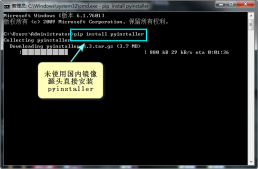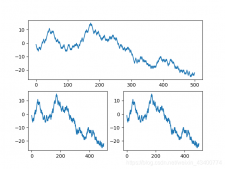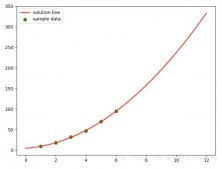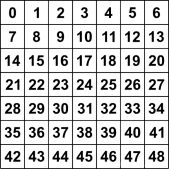当使用桌面应用程序的时候,
有没有那么一瞬间,
想学习一下桌面应用程序开发?
建议此次课程大家稍作了解不要浪费太多时间,
因为没有哪家公司会招聘以为Python程序员开发桌面程序吧?
开发环境:
- Python 3.6
- Pycharm
代码
界面设置
导入模块
|
1
|
import tkinter as tk |
实例化一个窗体对象
|
1
|
root = tk.Tk() |
标题
|
1
|
root.title('计算器') |
大小以及出现的位置
|
1
|
root.geometry("295x280+150+150") |
透明度
|
1
|
root.attributes("-alpha", 0.9) |
背景
|
1
|
root["background"] = "#ffffff" |
标签
|
1
|
lable1 = tk.Label(root, textvariable=result_num, width=20, height=2, font=('宋体', 20), justify='left', background='#ffffff', anchor='se') |
布局
|
1
|
lable1.grid(padx=4, pady=4, row=0, column=0, columnspan=4) |
按钮
|
1
2
3
4
5
6
7
8
9
10
11
12
13
14
15
16
17
18
19
20
21
22
23
24
25
26
27
28
29
30
31
32
33
34
35
36
|
button_clear = tk.Button(root, text='C', width=5, font=('宋体', 16), relief='flat', background='#C0C0C0', command=lambda: clear())button_back = tk.Button(root, text='←', width=5, font=('宋体', 16), relief='flat', background='#C0C0C0', command=lambda: back())button_division = tk.Button(root, text='/', width=5, font=('宋体', 16), relief='flat', background='#C0C0C0', command=lambda: operator('/'))button_multiplication = tk.Button(root, text='x', width=5, font=('宋体', 16), relief='flat', background='#C0C0C0', command=lambda: operator('*'))button_clear .grid(padx=4, row=1, column=0)button_back .grid(padx=4, row=1, column=1)button_division .grid(padx=4, row=1, column=2)button_multiplication .grid(padx=4, row=1, column=3)button_seven = tk.Button(root, text='7', width=5, font=('宋体', 16), relief='flat', background='#FFDEAD', command=lambda: append_num('7'))button_eight = tk.Button(root, text='8', width=5, font=('宋体', 16), relief='flat', background='#FFDEAD', command=lambda: append_num('8'))button_nine = tk.Button(root, text='9', width=5, font=('宋体', 16), relief='flat', background='#FFDEAD', command=lambda: append_num('9'))button_subtraction = tk.Button(root, text='—', width=5, font=('宋体', 16), relief='flat', background='#C0C0C0', command=lambda: operator('-'))button_seven .grid(padx=4, row=2, column=0)button_eight .grid(padx=4, row=2, column=1)button_nine .grid(padx=4, row=2, column=2)button_subtraction .grid(padx=4, row=2, column=3)button_four = tk.Button(root, text='4', width=5, font=('宋体', 16), relief='flat', background='#FFDEAD', command=lambda: append_num('4'))button_four.grid(padx=4, pady=4, row=3, column=0)button_five = tk.Button(root, text='5', width=5, font=('宋体', 16), relief='flat', background='#FFDEAD', command=lambda: append_num('5'))button_five.grid(padx=4, row=3, column=1)button_six = tk.Button(root, text='6', width=5, font=('宋体', 16), relief='flat', background='#FFDEAD', command=lambda: append_num('6'))button_six.grid(padx=4, row=3, column=2)button_addition = tk.Button(root, text='+', width=5, font=('宋体', 16), relief='flat', background='#C0C0C0', command=lambda: operator('+'))button_addition.grid(padx=4, row=3, column=3)button_one = tk.Button(root, text='1', width=5, font=('宋体', 16), relief='flat', background='#FFDEAD', command=lambda: append_num('1'))button_one.grid(padx=4, row=4, column=0)button_two = tk.Button(root, text='2', width=5, font=('宋体', 16), relief='flat', background='#FFDEAD', command=lambda: append_num('2'))button_two.grid(padx=4, row=4, column=1)button_three = tk.Button(root, text='3', width=5, font=('宋体', 16), relief='flat', background='#FFDEAD', command=lambda: append_num('3'))button_three.grid(padx=4, row=4, column=2)button_equal = tk.Button(root, text='=', width=5, height=3, font=('宋体', 16), relief='flat', background='#C0C0C0', command=lambda: equal())button_equal.grid(padx=4, row=4, rowspan=5, column=3)button_zero = tk.Button(root, text='0', width=12, font=('宋体', 16), relief='flat', background='#FFDEAD', command=lambda: append_num('0'))button_zero.grid(padx=4, pady=4, row=5, column=0, columnspan=2)button_decimal = tk.Button(root, text='.', width=5, font=('宋体', 16), relief='flat', background='#FFDEAD', command=lambda: append_num('.'))button_decimal.grid(padx=4, row=5, column=2) |
现在得出界面效果
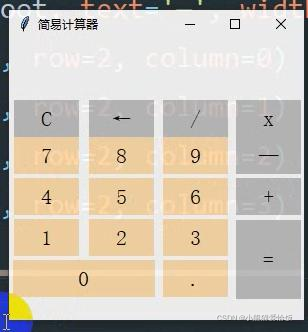
功能
添加数字
|
1
2
3
|
def append_num(i): lists.append(i) result_num.set(''.join(lists)) |
选择运算符号
|
1
2
3
4
5
6
7
|
def operator(i): if len(lists) > 0: if lists[-1] in ['+', '-', '*', '/']: lists[-1] = i else: lists.append(i) result_num.set(''.join(lists)) |
清零
|
1
2
3
|
def clear(): lists.clear() result_num.set(0) |
退格
|
1
2
3
|
def back(): del lists[-1] result_num.set(lists) |
等号
|
1
2
3
4
5
6
|
def equal(): a = ''.join(lists) end_num = eval(a) result_num.set(end_num) lists.clear() lists.append(str(end_num)) |
定义一个列表收集输入的内容
|
1
2
3
|
lists = []result_num = tk.StringVar()result_num.set(0) |
最后运行代码,效果如下图
先试试
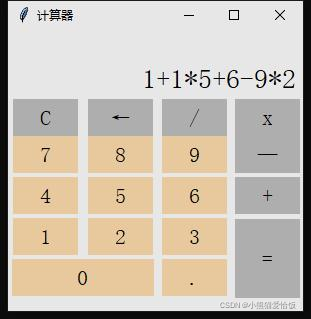
运算得出结果
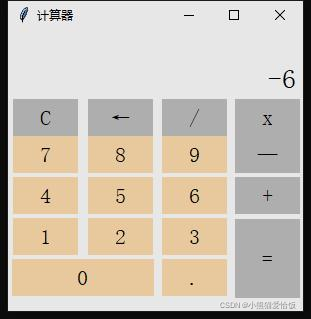
到此这篇关于Python开发一个桌面小程序的文章就介绍到这了,更多相关Python开发一个桌面小程序内容请搜索服务器之家以前的文章或继续浏览下面的相关文章希望大家以后多多支持服务器之家!
原文链接:https://blog.csdn.net/m0_67575344/article/details/124026574

